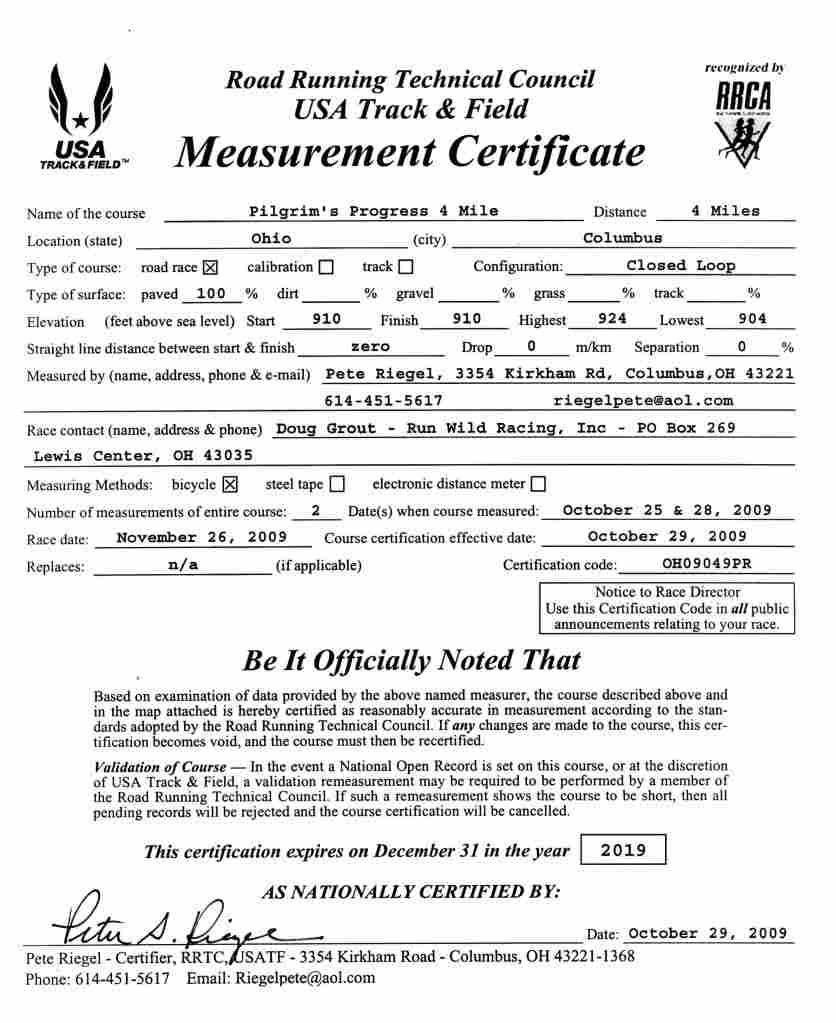PUTTING THE CART BEFORE THE HORSE
Electronic files have a certain attraction to many computer users. It’s been proposed that we adopt them for passing our information on from certifier, through the vice chairs, to the registrar and thence to the USATF site.
Let’s examine what’s needed for this to happen. When Mike Wickiser was registrar he began scanning maps and passing them on to the USATF site. He used the .tif format, which had a file size of about 4 mb per map. When Stu Riegel became registrar, USATF asked that file size be reduced. A period of intense research ensued, and the present format using .png files was adopted, which greatly reduced file size.
In order for the .png format to be used it was necessary only for the registrar to learn to create them as he scanned the paper files. As he already had to do this the new format was not a burden. No work was added.
At present the vice chairs receive envelopes in the mail. They contain certificates with maps on the back. They are to be checked for errors and forwarded weekly to the registrar.
The simplest way for the vice chair to do this is to simply stack up the paper certificates and, just once each week, sit down, examine them, find errors (usually few) , and put the papers in an envelope, keep a file copy of each, and mail them to the registrar.
If files come electronically, each certificate and map will be two files. They will be received at several times during the week from whichever certifier sends them. The vice chair will have to find a way to be sure the files are correctly named and in the proper format, and will have to stow the files in an electronic folder for later passage to the registrar. Can this operation be done as quickly as looking at a stack of paper sheets? I suspect not.
Using electronic files all the way from certifier to registrar will work only if all involved are using the same operating systems and same software, and are trained to do things the same way.
At present the registrar receives envelopes containing certificates and maps, generally two envelopes per week. He than thus deal with them as the vice chairs do. Scan the maps, name the resulting files, and pass the files on to USATF. He does not need to concern himself with formatting mistakes, as the paper copies are already in one consistent format.
Use of electronic files is supposed to make things easier, not harder. The people who should have the greatest say in this are the vice chairs and the registrar. They are the ones whose work will be increased.
So far absent from this discussion has been the issue of backups. Electronic material sometimes goes astray because of computer malfunction or operator error. With paper we have a backup system.
Until we have uniform equipment, software and training, those proposing change in our process must consider whether we can actually perform the change. It is certainly possible for some certifiers to pass on electronic files. The question is whether this adds to the work of the vice chairs and the registrar, and whether there is an end benefit.
I believe that we are not yet able to go fully electronic, and that going partially electronic will add work to no benefit. What we are doing now is not perfect, but it is the best we have yet learned how to do.
Original Post

